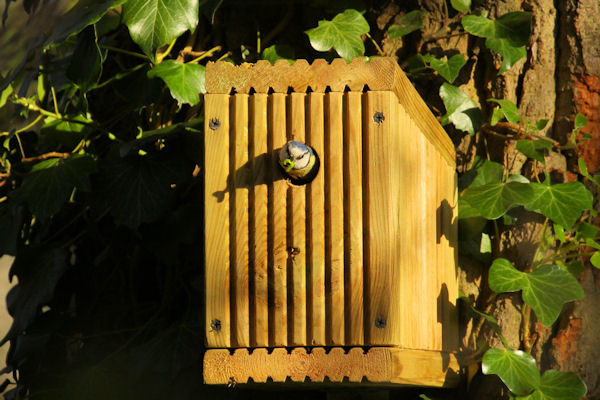Coppicing and the ditch mystery
Local resident Phil Riches tells us about coppicing and ponders the origins of the wood's mysterious ditches.
We know that Bicknor Wood was mainly a coppiced woodland in the past. The sweet chestnut trees were cut to within a few inches of the ground and new shoots from the sides of the stump were allowed to grow for about 15 years to produce long, straight poles. These poles were harvested by cutting them back level with the original stump and the process could then repeat itself. Woodlands were subdivided into compartments known as coupes with each one coppiced in a different year of the cycle. The cut area, known as a copse, could now support a broad variety of plant, insect, birds and mammals as the canopy was cut away and the light was allowed in.
I was able to interview Tom, a local man who had the rights to coppice one acre, or coupe. He vividly remembers how he harvested the wood and loaded it onto a trailer, which was then pulled by tractor to Bicknor Farm adjoining the woodland. There, the wood would be cut to size to make hop poles, fence posts or spiles. Other timber was roughly chopped as firewood for the farmhouse.
He also recollects the ditches which he says are very, very old and used to fill up with water, mentioning that it was much wetter in the past. Its fair to say that in 2020 and '21, the ditches have filled in many areas, becoming small ponds in places.
So what are these ditches and why are they present? The truth is that we don't know, but there is a strong chance that they were dug in medieval times. In order to protect the young coppice shoots from grazing animals, both the outer boundaries of the wood as well as the inner compartment boundaries were protected with stock-proof fences or walls, often placed on the top of low banks. These prevented animals from entering and stopping regeneration of the trees and are sometimes still evident in the form of low, winding banks and ditches. Although animals were excluded from the woodland whilst the poles were growing, it was common practice to allow animals in once the coppice was more mature. This was usually done on payment of a fee.
Most coppiced woodland was leased to local villagers by the local landowner (Bicknor Wood was once part of the Gore Court estate. The coppice also supported widely spaced large timber trees such as oak which remained the property of the landowner, but were looked after by the villagers in return for the coppiced wood. There are a number of large trees in Bicknor Wood today, including sessile and English oak species.
Coppicing declined following the middle of the 19th century, but continued in some areas until at least the end of the century after which it became uneconomic. There is now little physical evidence to suggest that some woodlands were once coppiced.
So, in conclusion, it is likely that the soil from the ditch was used to raise an embankment with a fence on the top. Over the years, the embankment was eroded down and just the shallow ditch remains. Further evidence to consider is the prevalence of thorny bushes along the outside edges of the ditch. Perhaps another means of excluding the animals?







Comments
Post a Comment